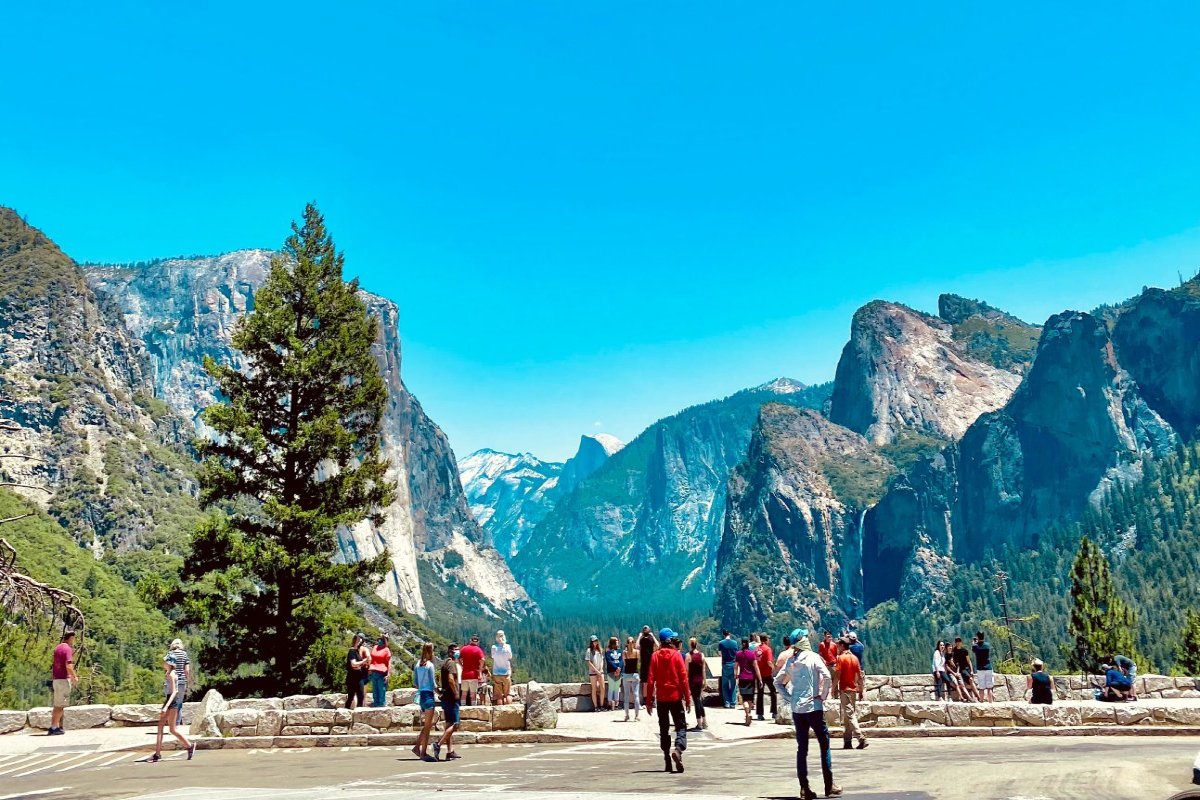Skift Take
Yosemite National Park is breaking a national park trend by not reinstating a summer reservation system. What happens to the park's visitor experience and local ecosystems could influence other national parks to reconsider theirs.
Yosemite National Park will not have a reservation system for the summer of 2023 and will embark on a process of gathering community input as whether it should to reinstate it in the future. Yosemite put a reservation system in place for two years because of the pandemic and continued it because of park construction projects. But the reservation requirement set off a chain of consequences for local communities, including traffic jams because cars weren’t allowed to drive through the park.
So Yosemite will not be reinstating a reservation system this upcoming summer, breaking the trend among U.S. national parks to limit visitor access. During that time, it will be gathering feedback and insight from communities, a practice that underscores a Skift megatrend that communities are no longer spectators in travel.
The U.S. National Park Service made the reservation removal announcement in November. Reservations at Yosemite were required in the summers of 2020 and 2021 due to the pandemic. Last summer, the park required day-trip visitors during peak hours of 4 a.m. to 6 p.m. to make a reservation in advance.
The program was kept in place last summer due to construction projects, which included a welcome center, campground rehabilitation, expanded parking and road repairs, which will contribute to visitor experience.
Starting this winter, Yosemite will conduct a public scoping process, according to Jonahthan Farrington, executive director of Yosemite Mariposa County Tourism Bureau, the destination marketing organization for Mariposa County, one of the four counties Yosemite National Park spans.
Under the public scoping process, Yosemite will gather feedback from businesses, communities and the public at large over the course of the year to develop a plan for the park’s future, which could result in a new reservation system. One of the topics that will likely be brought up are the indirect consequences of the park’s restricted entry and construction projects, which caused resulting car congestion on local highways and roads because cars couldn’t drive through the park during peak hours without a reservation, according to Farrington.
Yosemite’s reservation removal is an exception to a general trend among national parks. “The greater trend is going to be towards higher levels of restriction just because of the sheer number of visitors that are visiting our national parks,” said Wildland Trekking co-founder Scott Cundy.
During the pandemic, visitors flocked to national parks in record numbers, causing overtourism, a Skift megatrend has highlighted. In response, many national parks required restrictive booking windows, often between 30 and 60 days to manage the large crowds.
Yosemite saw 3.3 million visits in 2021, up from 2.3 million in 2020 but far from the high point of 5 million in 2016. Around 60 percent of visitors come during the summer period, said Farrington.
The end of restrictions will mean an economic boost for local counties, especially for Mariposa, where tourism employs 50 percent of the county’s residents. “Many of the hotels and other businesses, they’re only profitable during a five-month period and then the other seven months out of the year, they’re just trying to keep their costs down low and survive until the next season,” Farrington said. “A reservation system reducing access by as much as 40 percent is a pretty big deal.”
Under the reservation system, the visitor experience had a significant upgrade. “The valley has been way less crowded, much less traffic,” Cundy said. “For anyone who visited, they had a pretty much higher level experience.”
Not limiting visitors could run the risk of not only taking away from the experience but also wearing down the park’s infrastructure and environment. “Without the reservation system, you’re trying to jam four to five million visitors a year into really a small space so I think it’s hard on the park infrastructure and on the land,” Cundy said.
Yosemite Public Information Officer Scott Gediman told Mariposa Gazette that officials will definitely be doing “a lot of monitoring” of the park this upcoming summer to see how the policy plays out.
CORRECTION: A previous version of this story incorrectly said Yosemite National Park put its reservation system in place in 2020 and 2021 because of overcrowding. It was put in place because of the pandemic.
The Daily Newsletter
Our daily coverage of the global travel industry. Written by editors and analysts from across Skift’s brands.
Have a confidential tip for Skift? Get in touch
Tags: hiking, national parks, overtourism, reservation systems, reservations systems, sustainability, yosemite
Photo credit: Yosemite National Park will not reinstate a reservation system for the summer of 2023. Jeffrey Keenan / Skift

